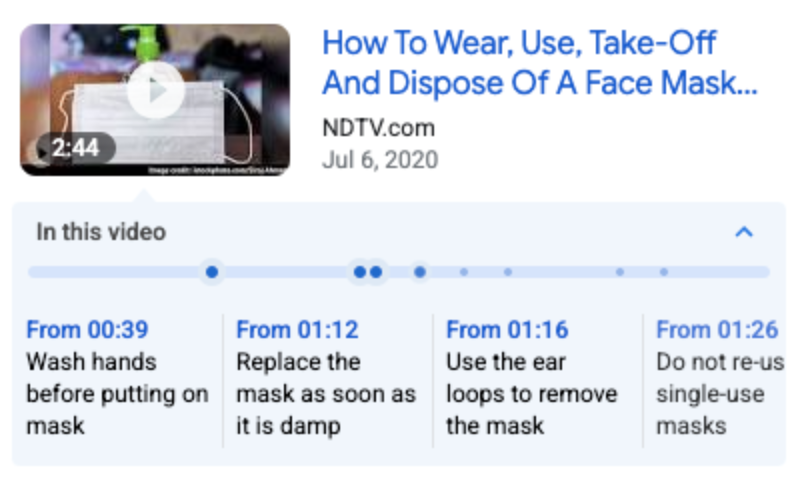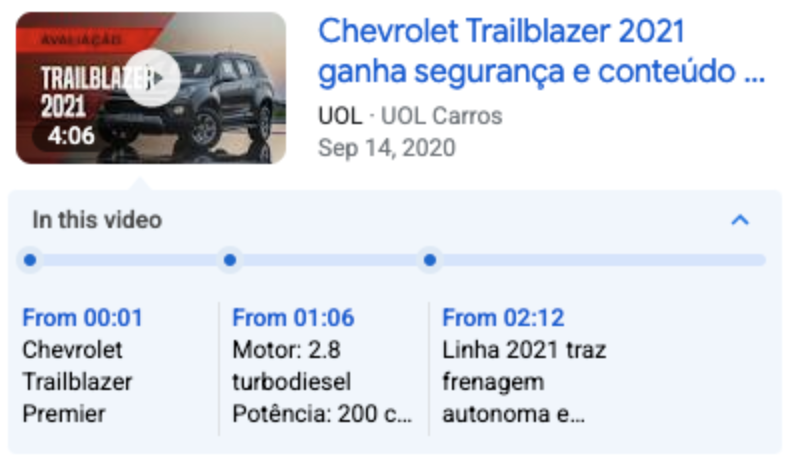Lunes, 19 de julio de 2021
Desde el primer lanzamiento de los momentos clave de videos en 2019, seguimos expandiendo y mejorando la función. Desarrollamos el diseño y llevamos momentos clave a más videos, tanto para dispositivos móviles como computadoras de escritorio, en todas las regiones donde está disponible la Búsqueda de Google. Los momentos clave ayudan a que más personas se conecten directamente con los segmentos de videos más relevantes y a que naveguen por ellos como capítulos de un libro.
Hoy lanzamos una nueva forma de habilitar momentos clave para los videos de tu sitio, sin necesidad de etiquetar manualmente cada segmento. Todo lo que debes hacer es indicarle a Google el patrón de URL para omitir una marca de tiempo específica en tu video. Luego, Google usará la IA para identificar los momentos clave en el video y para mostrar vínculos directamente a esos momentos en los resultados de la Búsqueda.


Primero anunciamos la prueba beta SeekToAction durante Google I/O y, a partir de hoy, la función dejará de estar disponible en la versión beta y admitirá este lenguaje de marcado para cualquier sitio con videos. A continuación, se incluyen algunas sugerencias que debes tener en cuenta cuando implementas este lenguaje de marcado:
- Las URL deben tener la capacidad de establecer un vínculo directo a un punto que no sea el punto de inicio del video. Por ejemplo,
https://www.example.com/example?t=30comienza a los 30 segundos de un video. - Usa el lenguaje de marcado de
SeekToActionen cada página de video en la que desees que Google identifique automáticamente los momentos clave y sigue nuestros lineamientos adicionales. Aquí encontrarás un ejemplo detallado. - Para identificar automáticamente los momentos clave de tu video, Google debe poder recuperar tus archivos de contenido de video.
Ten en cuenta que el lenguaje de marcado de SeekToAction solo se aplica a los videos incorporados en tu propio sitio. Si publicas videos en plataformas de terceros en las que no controlas el lenguaje de marcado de schema.org, puedes comunicarte con esas plataformas para saber si este lenguaje marcado es compatible.
Esperamos que el lenguaje de marcado de SeekToAction te resulte más fácil y eficiente para habilitar los momentos clave y para ayudar a los usuarios a interactuar más con tus videos. Si tienes alguna pregunta, publícala en el foro, conéctate con @googlesearchc en Twitter o envía comentarios directamente desde nuestras páginas de documentación.
